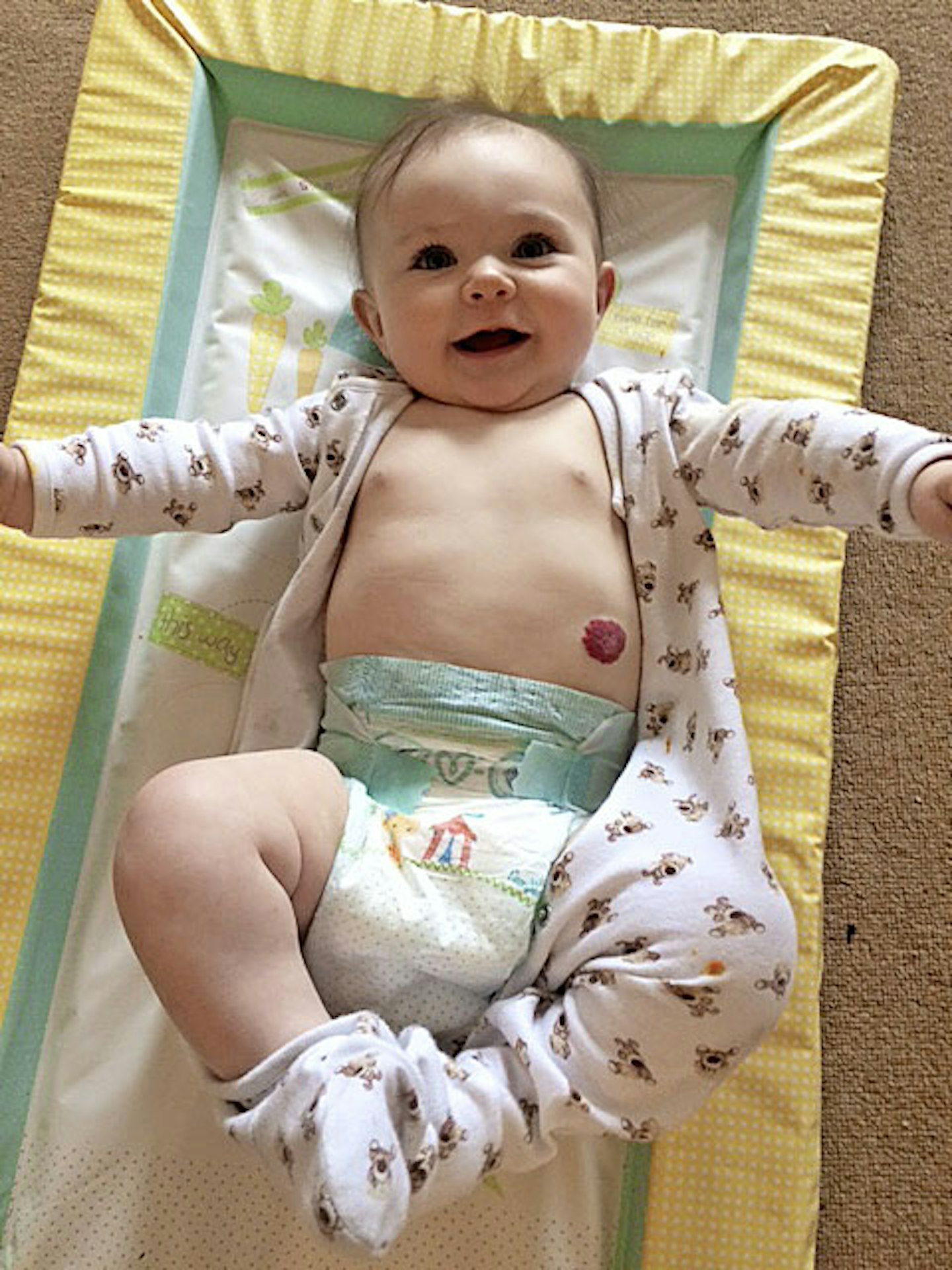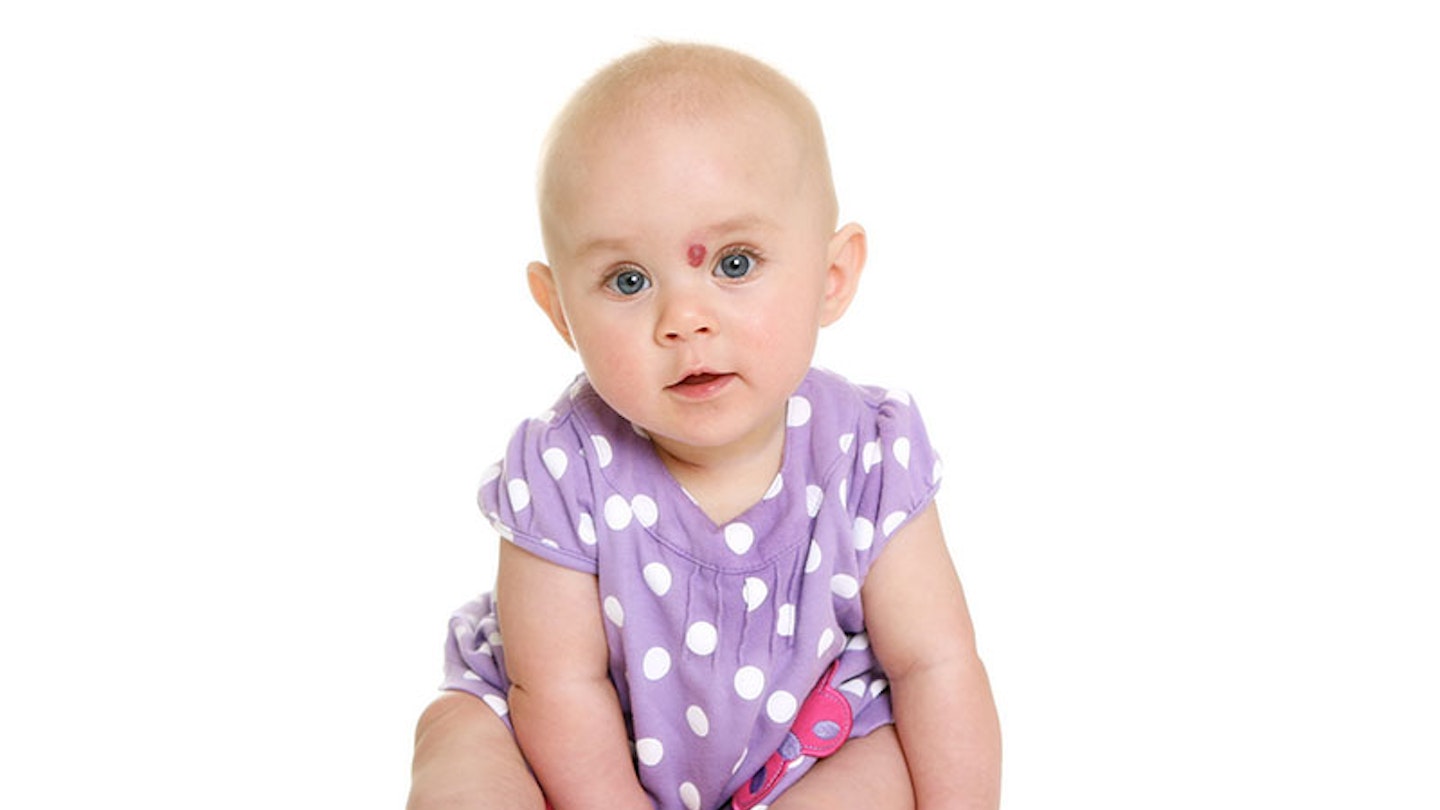Two out of three newborns have a distinguishing birthmark. Some are visible the day a youngster is born, while others develop shortly afterwards.
There are many different types, and most are so common you probably have one somewhere yourself, and not even realise it’s there.
‘Embrace your baby’s birthmark,’ says dermatologist Dr Hannah Cookson. ‘They don’t cause any harm and we very much see them as special marks that make each person individual.’
Vascular birthmarks
Vascular birthmarks are usually pink or red, and often occur on the head or neck, and are caused by blood vessels in the skin.
Salmon patch birthmarks
One in two babies is born with a ‘stork mark’ or salmon patch.
These flat pink patches appear on the eyelids, neck or head. Most will fade completely within a few months, although on the forehead they may take up to four years to disappear. They are often more noticeable when a baby cries or is getting upset, so some parents find them a valuable early warning system.
Strawberry birthmarks
Strawberry marks are another type of vascular birthmark, which affect one in ten babies. They are also known as haemangioma.
They appear as pale pink patches shortly after birth, then grow quickly for the first six months, turning into a raised bump and going red, before eventually shrinking and disappearing by age seven.
‘These are harmless growths of cells in the walls of blood vessels,’ explains Dr Hannah. ‘A superficial haemangioma sits on the surface of the skin and has the classic strawberry appearance. A deep haemangioma forms deeper down and appears as a bluish lump.’
Blue-grey spot birthmark
Blue-grey spots can appear as one large patch across a baby’s skin or several smaller spots. They have no particular shape to them and can look almost like paint has been flicked up the baby’s back and even be mistaken for bruises. They are flat and cause the baby no problems, so no treatment is necessary.
They were known for many years as Mongolian blue spots but this term is no longer considered to be appropriate and it’s known in the medical world as Congenital dermal melanocytosis.
Birthmarks caused by pigment cells
The other main type of birthmark is caused by pigment cells, and are usually brown. Café-au-lait spots are coffee-coloured skin patches, while Mongolian spots are blue-grey or bruised-looking birthmarks that are present from birth, and congenital moles are relatively large brown or black moles that are present from birth.
They are all quite common and usually become proportionally smaller and less obvious with time, although they may darken during puberty or become bumpy or hairy.
“I adore my baby’s birthmark”
Penny Stretton, 34, lives in London with her husband Craig and children Archie, five, and Joni, eight months. She says:
“I can remember the exact moment I first noticed a small mark on my baby girl’s tummy.
“My husband and I were in that lovely haze, half an hour after Joni’s birth last July, and I ran my finger over her skin and said, ‘Ooh, do you think this is a birthmark?’ It was no more than the faintest hint of a paler patch of skin. ‘Looks like it,’ Craig smiled.
“But two days later, I noticed the patch had changed. It was bigger and red dots had appeared. As Joni seemed well, I dismissed my concerns. It was only when it continued to grow that I told my midwife, and she suggested I saw our doctor.
“By the time we saw the GP, Joni was two weeks old and her mark had doubled in size. ‘It looks like a type of birthmark, a haemangioma,’ the doctor said, and referred us to a dermatologist. Our appointment wasn’t for six weeks.

“Though the little ‘strawberry’ didn’t seem to bother Joni at all, it played on my mind. It grew to the size of a 50-pence piece and became raised and bumpy. Those tiny red dots slowly joined up until the surface was almost totally red.
“The dermatologist confirmed it was a haemangioma. She told us that by the time Joni reaches her first birthday, it should start to shrink, and by five years, it should disappear. It was a relief to know it was harmless! Once I knew I didn’t need to worry about it, I became rather fond of Joni’s red ‘berry’.
“I liked that she had her own special mark, and I started to tell everyone about it. And the dermatologist had warned me that this type of birthmark can sometimes bleed, so it wasn’t too much of a shock one night when I saw blood on her tummy.
“Joni is now eight months old, and her mark is already starting to show signs of shrinking. It even has some small white patches where the skin is going back to normal. Joni tries to play with it, though I try to stop her in case she makes it bleed.
“Seeing the strawberry appear was a shock at first, and I wish I’d known there was no need to panic. I adore it now, and feel a little sad that she won’t have it forever.”
